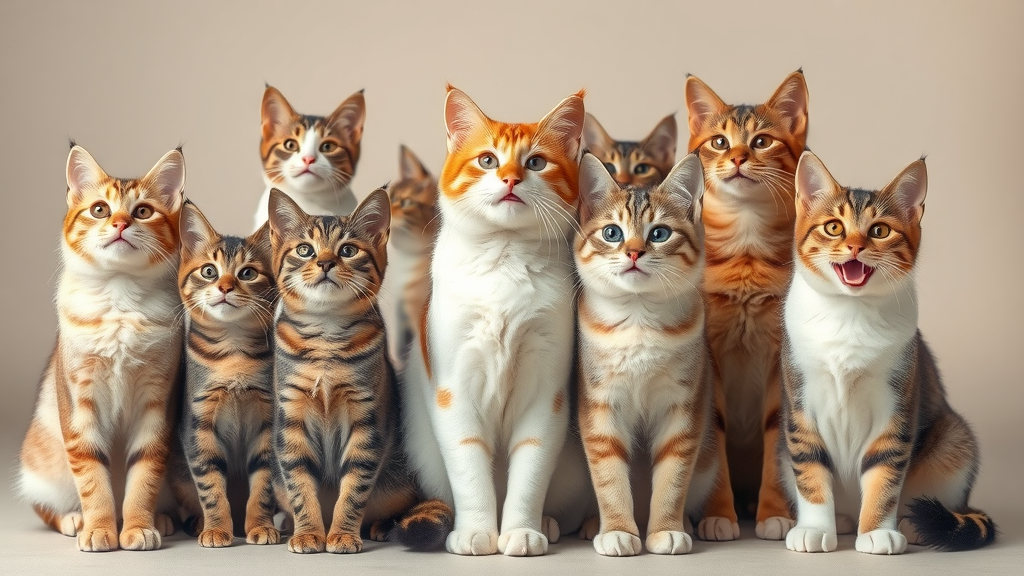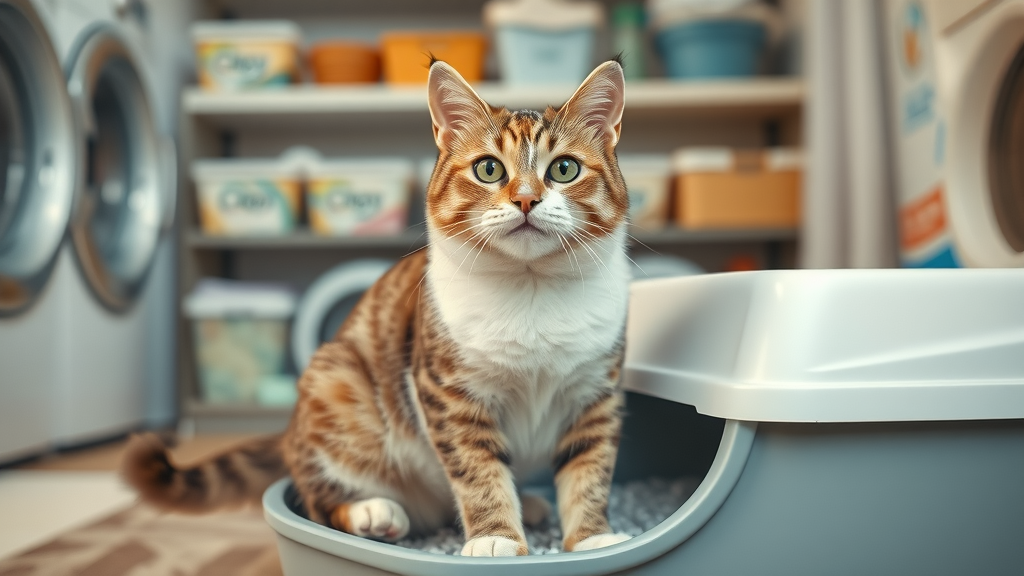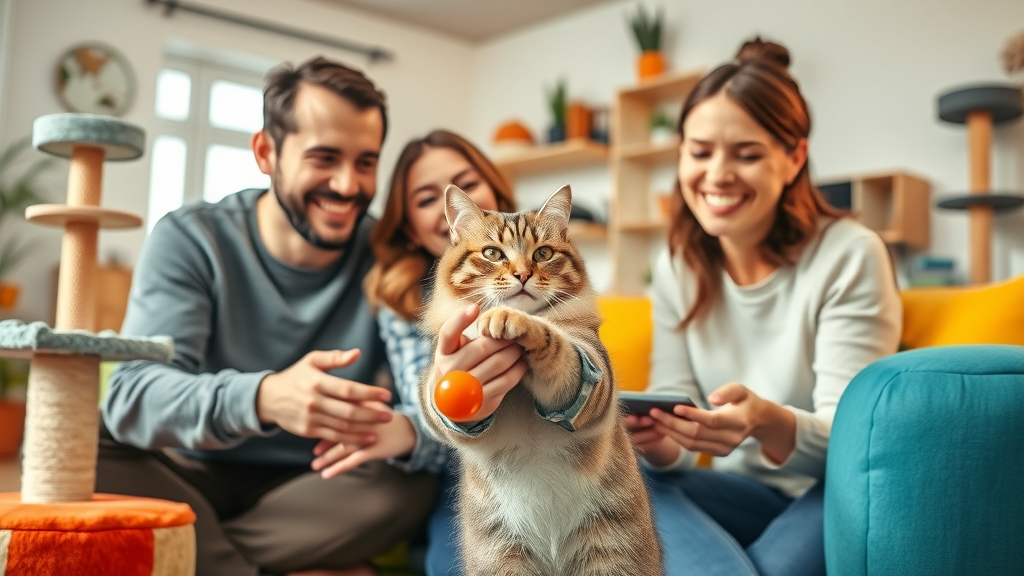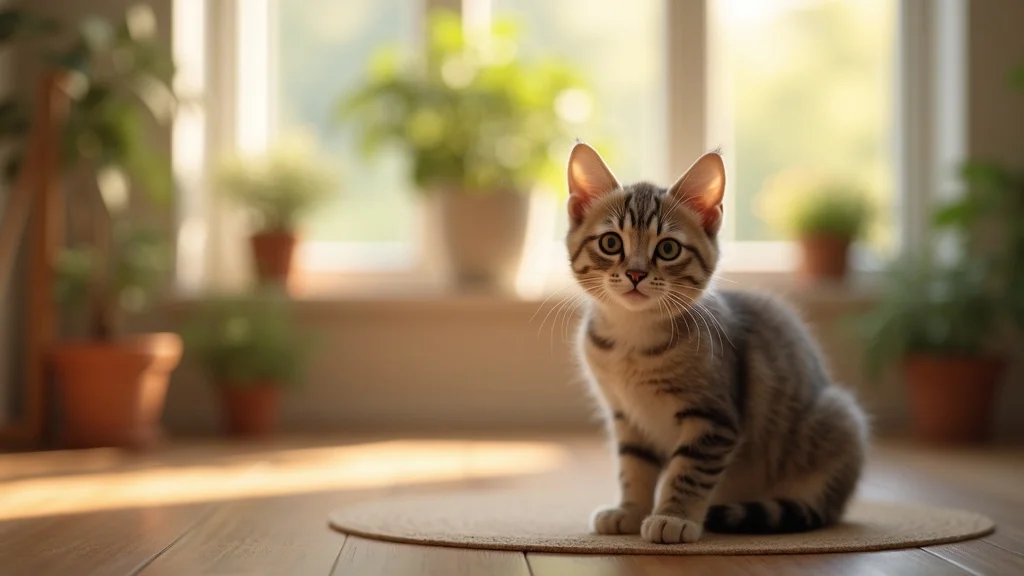Ever wondered, “Why is my cat meowing so much?” Is your cat’s voice disrupting your peace, or have you noticed a sudden change in your feline’s vocal habits? Understanding the world of cat meowing will not only help you pinpoint the reason for your cat’s chatter but will also strengthen your special bond. In this comprehensive guide, you’ll get expert insights, practical solutions, and easy-to-apply steps for handling all types of meowing—from curious kittens to senior cats who seem to vocalize at all hours.
Unlocking the Mystery: Why Is My Cat Meowing So Much?
When it comes to your furry friend’s verbal expressions, it’s natural to ask: why is my cat meowing so much? Cats meow to get your attention, express feelings, or communicate needs. Some cat breeds are more talkative, while others remain mostly silent. Factors like age, health, environment, or even the time of day can drastically change how often a cat meows . Whether your cat is meowing constantly at midnight or seems to be meowing excessively out of the blue, every vocalization tells a story.
Observing when and how your cat meows can give essential clues. Some cats meow a lot when they’re hungry, bored, or simply seeking your affection. Others may be signaling medical conditions like kidney disease or cognitive dysfunction, especially in older cats. By investigating these patterns, you can confidently address your feline’s needs, ensuring they feel safe, heard, and healthy.

Key Takeaways From Understanding Why Is My Cat Meowing So Much?
- Learn the most common reasons cats meow excessively
- Explore the impact of breed, age, and medical conditions on cat vocalizations
- Discover actionable solutions to reduce unwanted meowing
- Improve your bond and communication with your cat
What Drives a Cat Meow? Decoding Cat Meowing and Communication
The Science of Cats Meow: Feline Communication Explained
Cats use meowing for a variety of reasons—unlike wild felines, who rarely vocalize with each other. Domestic cats have developed meowing a lot as a way to communicate primarily with humans. Each meow can signal something unique: an invitation to play, a request for food, or simply a greeting. Understanding this helps you “translate” your cat’s language and provide what they need—whether it’s comfort, sustenance, or medical attention.
Meowing excessively can often mean your cat feels misunderstood or is trying urgently to get your attention. Young cats and kittens might meow more as they develop social and survival skills, while adult cats often meow for specific reasons. Paying attention to the tone, volume, and pattern of vocalizations can unravel much of their mysterious messaging.

Cat Breeds and Their Meowing Tendencies
Did you know that certain breeds of cats are genetically predisposed to be more or less vocal? For instance, Siamese cats are famously chatty, often meowing persistently to get their point across. Meanwhile, breeds like Persians tend to be more reserved, meowing only when it’s absolutely necessary. Maine Coons sit somewhere in between, happy to interact but less intense.
Knowing the typical behavior for your cat’s breed helps set realistic expectations and can inform how you respond. If you have a cat who meows a lot , especially those from breeds with high vocalization, adapting your routine and providing mental stimulation can decrease unwanted meowing.
| Breed | Typical Meowing Level | Description |
|---|---|---|
| Siamese | High | Very vocal, frequent meowing |
| Persian | Low | Generally quiet |
| Maine Coon | Moderate | Will vocalize, but less excessively |

Is Your Cat Meowing Excessively? Distinguishing Between Normal and Excessive Meowing
Signs and Symptoms of Meowing Excessively
It can feel overwhelming when your cat is meowing more than usual. But not all meowing is a cause for alarm. Some cats naturally meow a lot, and kittens, in particular, use frequent vocalizations to signal needs. However, excessive meowing is generally defined as a noticeable increase in volume, frequency, or urgency that departs from your cat’s typical pattern.
Look for meowing that interrupts sleep, accompanies behavioral changes (like hiding or aggression), or indicates distress (long, plaintive cries). If you notice your cat meowing excessively, especially when combined with other unusual behaviors, it may be a signal that something deeper is happening.
When Meowing a Lot Signals a Deeper Problem
Excessive meowing can sometimes signal underlying health issues, changes in the household, or unmet emotional needs. If your normally quiet cat suddenly starts vocalizing non-stop, it’s essential to rule out pain, illness, or changes in environment. Senior cats may develop cognitive dysfunction , causing them to become confused or anxious, leading to vocalization at odd hours (“middle of the night” meowing is especially common with older cats).
Consider recent changes: a lost companion, a new pet, or relocation can throw your cat’s world into chaos, prompting them to meow a lot. Taking the time to assess both physical and emotional causes ensures your cat gets the attention or help they really need.
"A cat meows not to annoy you, but to communicate a genuine need or desire." - Feline Behavior Specialist
Top 10 Reasons Why Is My Cat Meowing So Much?
- Hunger or Thirst
- Seeking Attention
- Discomfort or Pain
- Illnesses such as hyperthyroidism
- Litter box issues
- Loneliness or Separation Anxiety
- Mating behavior, especially in male cat
- Age-related cognitive dysfunction
- Stress or Environmental Changes
- Genetic predisposition to frequent cat meow

Common Cat Meowing Scenarios Explained
Why Does My Cat Walk Around the House Meowing?
If your cat walks around the house meowing , there’s usually a purpose behind the wandering vocals. Sometimes, this behavior indicates a search for something—be it a toy, a companion, or reassurance from you. Cats meow to announce their presence, especially when seeking out interaction or when a change has disrupted their usual environment. This wandering meow can also mean discomfort or uncertainty.
Another common reason is boredom or insufficient mental or physical stimulation. Cats need a stimulating environment: window perches, interactive toys, and scheduled playtimes curb the tendency to vocalize aimlessly around the house. For male cats , it can also indicate territory marking or mating instincts, especially if they are not spayed or neutered.

Why Is My Cat Sitting and Meowing So Much?
When a cat is sitting and meowing so much , it often signals a direct request. Your feline may want food, wish to play, or simply be calling for your attention. If paired with looking at a specific spot (like their food bowl) or timing (such as right before dinner), it’s likely they’re letting you know exactly what they want. Pay close attention: different meows can vary in tone and urgency depending on whether they’re asking, demanding, or expressing discomfort.
This behavior can also be triggered by medical conditions or physical discomfort, especially in senior cats or those with chronic health issues. Never ignore persistent sitting and meowing—if routine solutions (feeding, playing, cuddling) don’t resolve the vocalization, a vet check might be needed.
How to Respond to Meowing Excessively in Cats
Stop Meowing: Training and Behavior Modification
Start by observing the patterns in your cat’s meowing and consider what’s changed recently at home. When your cat meows a lot for attention, don’t reward constant vocalizations with treats or food—wait for a quiet pause before responding. Use positive reinforcement: offer treats, petting, or playtime only when your cat is calm. Over time, your cat will learn that quiet, polite behavior earns rewards, helping to stop meowing excessively .
It’s important to remain consistent—mixed messages can confuse your cat, making behavior modification less effective. If your cat’s meowing is rooted in boredom or anxiety, introduce more interactive toys, consider puzzle feeders, and set regular intervals for play. The goal isn’t to silence your cat but to teach them healthy ways to get your attention.

Addressing the Needs Behind Cat Meows
Always address the underlying reasons behind vocalization. Hungry cats need a balanced meal schedule, while lonely felines benefit from more companionship and mental stimulation. Ensure your cat has access to a clean litter box , fresh water, and a stress-free environment. If medical or emotional needs are met, but the meowing continues, consult with your veterinarian or a feline behaviorist to dig deeper into possible hidden causes.
For cats who have lost a companion (human or animal), extra attention and patience during the adjustment period can work wonders. By meeting your cat’s fundamental needs, you’ll reduce the drive to meow excessively and foster a more harmonious household.
Medical Causes for Why Is My Cat Meowing So Much?
When Excessive Meowing Means a Trip to the Vet
If your cat’s meowing isn’t easily explained by changes in routine or environment, consider potential health issues. Kidney disease, overactive thyroid (hyperthyroidism) , or urinary tract problems can make your cat meowing more frequent and intense. Senior cats experiencing cognitive dysfunction are especially prone to confusion and vocalizing, especially at night.
Physical discomfort from injuries or arthritis often prompts excessive meowing . Listen for plaintive or pained cries, and observe for changes in other habits—like reduced appetite, excessive drinking, or altered grooming—these may signal a need for prompt veterinary care.
Common Medical Conditions Affecting Cat Meow Patterns
- Hyperthyroidism
- Kidney disease
- Urinary tract issues
- Pain due to arthritis or injuries
If you suspect medical causes, don’t wait. Even if your cat seems healthy otherwise, persistent or sudden changes in meowing patterns should always be checked by your vet. Early intervention can prevent complications and bring your cat’s comfort—and yours—back to normal.

Behavioral Causes: Understanding the Motivations Behind Cat Meowing
Territory and Mating: Male Cat Meowing Excessively
Unneutered male cats are notorious for meowing excessively, especially when seeking a mate or establishing territory. Their loud, persistent yowls serve as both a call to prospective mates and a warning to rivals. If your male cat is meowing excessively and displays additional behaviors like spraying or agitation, neutering may help significantly reduce these vocalizations.
In contrast, spayed or neutered female cats may also meow more during heat cycles, but the pattern and intensity often differ. Recognizing the difference between typical and excessive meowing in your cat’s context is key to deciding on the right intervention.
Cognitive Dysfunction and Age-Related Vocalization
As cats age , it’s natural for them to develop changes in their behavior, including sleep disturbances and confusion. This condition, sometimes called cognitive dysfunction (similar to dementia in humans), is a common reason older cats start meowing excessively, especially at night. They may forget routines, get disoriented in familiar spaces, or vocalize for reassurance.
It’s vital to provide extra comfort to senior cats, maintain a consistent routine, and consult with your veterinarian to rule out treatable causes. Sometimes medication or environmental modifications can relieve confusion and reduce night-time vocalizations.

Environmental and Emotional Causes of Meowing a Lot
Stress and Changes in the Home: Cats Meow as a Coping Mechanism
Cats meow to express more than their physical needs—they communicate emotional states as well. If you’ve moved recently, introduced a new pet, had a change in routine, or even just rearranged the furniture, your cat who meows a lot may be voicing confusion or anxiety. Even small changes can trigger this stress response.
Provide safe hideaways, maintain familiar scents, and introduce new things gradually. Offering extra reassurance and affection during periods of transition can help reduce stress-related meowing and foster a sense of security for your cat.
Loneliness and Separation Anxiety: The Social Side of Cat Meowing
Despite the myth of independent cats, many felines are extremely social and thrive on routine. Being left alone for extended periods can lead to meowing excessively , especially if the home used to be busier. This social vocalization is their way of asking for companionship or expressing distress at being left out.
Enriching your cat’s environment with interactive toys, puzzle feeders, and frequent play sessions can help. For cats who struggle with separation, consider a feline companion (after proper introductions) or timed, interactive toys that dispense treats while you’re away.
Resolving Litter Box Issues to Lessen Cat Meowing
How Litter Box Problems Lead to Meowing Excessively
One common reason behind increased vocalization is trouble with the litter box . Cats are particular about hygiene and privacy. If the box is dirty, located in a busy area, or the wrong type of litter is used, your cat may let you know by meowing until the situation is improved. They may also meow if they associate the box with discomfort due to medical issues.
Monitor your cat’s litter box habits closely. Sudden avoidance, frequent trips without producing anything, or persistent yowling near the box all warrant immediate attention. Address both environmental and medical causes promptly.
Best Practices for Litter Box Maintenance and Placement
- Clean the litter box daily
- Ensure proper litter type and depth
- Place box in a quiet, safe location
A happy cat is a quiet cat. Maintain a consistent cleaning schedule, experiment with different litters if needed, and avoid moving the box unless absolutely necessary. Peaceful, private litter box access will reduce anxiety and keep excessive meowing at bay.

Practical Tips to Reduce Why Is My Cat Meowing So Much?
Building Enrichment and Routine: Meeting Feline Needs
Every cat meows to communicate its needs, and many behavioral causes stem from boredom or lack of stimulation. Build a daily routine that incorporates play, affection, feeding, and exploration. Create vertical spaces, window perches, or outdoor enclosures so your cat has options for mental and physical activity.
Changes to the family routine or environment can unsettle cats, so be patient and keep schedules consistent. Structured enrichment helps fulfill your cat’s social and instinctive needs, which in turn leads to fewer vocal demands.
Diet, Play, and Social Interaction as Solutions
Regular, nutrient-rich meals at set times give your cat security and help eliminate mealtime meows. Interactive toys and regular play sessions boost confidence and stave off boredom, especially for indoor cats or those left alone often. Consider food puzzles, feather wands, or laser pointers during playtime.
Make time for snuggling and gentle petting. True, some adult cats prefer alone time, but many relish routine affection. Higher engagement levels mean less meowing for attention or due to loneliness, and a happier, healthier household for all.

When to Seek Professional Help for Cat Meowing
Signs Your Cat May Need a Veterinarian or Behaviorist
If attempts to address meowing with enrichment, affection, routine, and medical checks are unsuccessful, it’s time to bring in a veterinarian or feline behaviorist. Sudden, intense, or distressing vocal changes—especially if they include physical symptoms like weight loss, aggression, tremors, or loss of appetite—should always prompt a professional evaluation. Behavioral specialists can uncover obscure triggers, offer targeted training strategies, or diagnose anxiety disorders that drive persistent vocalization.
Never feel hesitant about seeking outside help. Early intervention not only alleviates distress but also improves your bond by ensuring your cat is heard, cared for, and healthy.
People Also Ask
Why does my cat meow constantly for no reason?
While it may seem like your cat is meowing for “no reason,” most feline vocalizations have an underlying cause. Boredom, hunger, desire for attention, medical conditions, or stress are typical drivers. If you can’t pinpoint a clear reason, consider both recent household changes and schedule a vet visit if the behavior is new or persistent.
Why does my cat walk around the house meowing?
Cats often walk around the house meowing due to loneliness, boredom, seeking attention, or searching for something that is missing. Sometimes, mature or unneutered male cats vocalize as part of mating or territory behaviors. If this is new or more intense than usual, check for environmental stressors or unmet needs.
How do I get my cat to shut up?
It’s important to address the root causes rather than simply silencing your cat. Ensure their needs for food, play, social interaction, and medical well-being are met. Use positive reinforcement to reward quiet moments and avoid responding to demanding meows, so your cat learns to communicate in less disruptive ways.
Why is my cat sitting and meowing so much?
Sitting and persistent meowing often signals a specific request—food, play, attention, or discomfort. If changing routines, playing with your cat, or offering food doesn’t resolve it, look for signs of illness or distress and consult your veterinarian for further assessment.
Frequently Asked Questions About Why Is My Cat Meowing So Much?
Can cats learn to meow less?
Yes—through consistent routines, positive reinforcement, and meeting their physical and emotional needs, most cats can learn to vocalize less. Training and environmental enrichment play a key role in shaping meowing behavior over time.
Is it normal for older cats to meow excessively at night?
Unfortunately, yes. Night-time meowing in older cats often stems from cognitive dysfunction, confusion, or age-related anxiety. Maintaining a regular routine, offering comfort, and talking to your vet about possible treatments can help reduce night-time vocalization.
Should I ignore my cat’s excessive meowing?
While you shouldn’t immediately cater to every meow, especially if it’s attention-seeking, completely ignoring persistent or drastic changes isn’t wise. Rule out medical and emotional causes first. Then, reinforce quiet behavior with rewards and structured attention.
Are certain cat breeds more prone to frequent meowing?
Yes, breeds like Siamese, Oriental Shorthair, and Bengal are known to be more vocal, while Persians and British Shorthairs are typically quieter. Recognizing your cat’s breed tendencies helps set expectations and guides your response strategies.
Does excessive meowing always mean a health problem?
No—not always. While health issues can lead to more vocalization, many other factors like breed, boredom, environmental changes, or social needs are also common reasons for excessive meowing. Always rule out medical causes when sudden changes occur.
Expert Tips to Prevent Meowing Excessively in Cats
- Provide consistent routines and ample playtime
- Address health or behavioral issues promptly
- Use positive reinforcement to guide behavior
- Consult your veterinarian for unresolved concerns
Final Thoughts: Enhancing Communication to Address Why Is My Cat Meowing So Much?
Understanding why your cat meows gives you the power to nurture their health, wellbeing, and the closeness you share. Approach every vocalization as a form of communication, and apply proven strategies to promote harmony at home.
Take Action: Improve Your Cat’s Wellbeing Today
Pay attention to your cat’s unique needs and patterns. Make small, consistent changes and consult your vet for persistent problems. By listening and responding thoughtfully, you can help your cat feel safe, happy, and understood.
Understanding why your cat is meowing excessively is crucial for addressing their needs and ensuring their well-being. Excessive meowing can stem from various factors, including hunger, attention-seeking, stress, medical issues, or age-related changes. For a comprehensive overview of these causes and practical solutions, consider reading the article “ Why Does My Cat Meow So Much? ” by the North Shore Animal League. This resource delves into common reasons behind increased vocalization and offers actionable advice to help manage your cat’s meowing behavior.
Additionally, the ASPCA provides valuable insights in their article “ Meowing and Yowling .” This piece explores the various motivations behind feline vocalizations and offers guidance on how to respond appropriately to your cat’s meows. By consulting these resources, you can gain a deeper understanding of your cat’s behavior and implement effective strategies to address excessive meowing.
 Add Row
Add Row  Add
Add 




Write A Comment